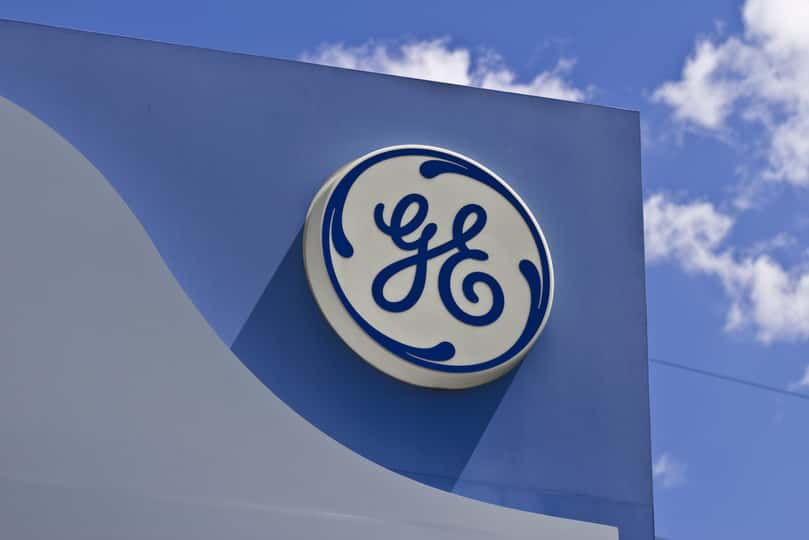High-tech industrial conglomerate General Electric Company (GE) has regained momentum since the third quarter of 2020 as the industrial sector resumed operations. The stock has gained 112.7% over the past nine months. With industrial and manufacturing production rising 0.9% and 1%, respectively, in January, GE’s rebounding sales have driven its stock 24.4% higher year-to-date.
However, the company’s poor growth history, even before the pandemic, is raising concerns regarding the stock’s prospects. While GE reported impressive financials in the fourth quarter of 2020, rising competition and a declining asset base have led to a “Neutral” rating for the stock in our proprietary POWR Ratings system.
Here’s what we think could shape GE’s performance in 2021:
Bullish Analyst Sentiment
GE’s ratings and growth projections were upgraded by Goldman Sachs and UBS Financial Services in February, which helped the stock gain 20% over the past month. Both firms expect the stock to hit $15 soon.
UBS analyst Markus Mittermaier expects the stock to advance owing to favorable macroeconomic conditions. With the House of Representatives passage of a $1.9 trillion COVID stimulus bill (and with the likelihood the Senate will pass it also), the Fed is expected to keep the interest rates and its bond buyback policies at their current levels, and GE’s lower pension funds liabilities are among the key factors expected to drive the company in the coming months.
Goldman Sachs analyst Joe Ritchie improved his ratings of GE based on the company’s improved cash balance, which was hard hit during the pandemic. GE’s cash from operations from its aviation segment has been rising owing to the recovery of the United States’ aviation industry. The company has also undertaken several steps to improve its free cash flow through capital restructuring efforts and adjustments to its working capital requirements.
Wavering Financials
GE’s revenues, total assets and levered free cash flow have declined at CAGRs of 7.1%, 11.8% and 3.5%, respectively, over the past three years. The company’s EPS has declined 5002.4% year-over-year, while its revenues declined 16.4% over this period. However, its EBITDA margin improved 88.9% over this period.
GE’s trailing 12-month ROE of 16.26% is 98.3% higher than the industry average 8.2%. Its trailing 12-month net income margin and levered free cash flow margins of 7.16% and 15.54%, respectively, compare favorably with industry averages. However, the company’s gross profit margin of 16.97% is 41.2% lower than the industry average 28.86%. Its trailing 12-month ROTC is negative.
Trading at a Slight Premium
In terms of its non-GAAP forward p/e, GE is currently trading at 52.45x, 142.1% higher than the industry average 21.67x. The company’s non-GAAP PEG of 12.10x is 510.3% higher than the industry average 1.98x.
However, in terms for forward price/sales, GE is currently trading at 1.46x, 5.4% lower than the industry average 1.55x.
Consensus Ratings and Price Target Indicate Potential Downside
While the Goldman Sachs and UBS ratings indicate a potential upside, it is dependent on the rate at which the economy recovers. With the U.S. unemployment rate still significantly above the pre-pandemic levels, and with inflation concerns in the broader markets, climbing Treasury yields are expected to be a hindrance to GE’s growth.
As a result, of 21 Wall Street analysts that rated the stock, seven rated it Hold. Moreover, analysts expect the stock to decline 5.2% in the near term to hit $12.31.
POWR Ratings Reflect Uncertainty
GE has an overall rating of C, which equates to Neutral in our proprietary POWR ratings system. The POWR Ratings are calculated by considering 118 different factors with each factor weighted to an optimal degree.
The stock has a C grade for Stability, Sentiment, and Quality. GE has a beta of 1.08, indicating slight volatility, which is in sync with its Stability grade. Its profitability and growth projections justify the stock’s Sentiment and Quality grades.
Of the 46 stocks in the A-rated Industrial – Manufacturing industry, GE is ranked #38. In addition to the grades I’ve highlighted, check out additional POWR Ratings for Value, Growth and Momentum here.
Click here to check out the top-rated stocks in the Industrial – Manufacturing industry.
Bottom Line
GE demonstrates solid growth potential in the coming months, backed by macroeconomic tailwinds and internal restructuring. However, with weekly U.S. unemployment claims reflecting a slowdown in job creation, and with inflationary pressures in the economy, we think it best to wait for a better entry point before investing in the stock.
Want More Great Investing Ideas?
9 “MUST OWN” Growth Stocks for 2021
How to Ride the 2021 Stock Market Bubble
5 WINNING Stocks Chart Patterns
K.I.S.S. for the March Stock Market
GE shares were trading at $13.30 per share on Thursday afternoon, down $0.14 (-1.04%). Year-to-date, GE has gained 23.15%, versus a 0.06% rise in the benchmark S&P 500 index during the same period.
About the Author: Aditi Ganguly

Aditi is an experienced content developer and financial writer who is passionate about helping investors understand the do’s and don'ts of investing. She has a keen interest in the stock market and has a fundamental approach when analyzing equities. More...
More Resources for the Stocks in this Article
| Ticker | POWR Rating | Industry Rank | Rank in Industry |
| GE | Get Rating | Get Rating | Get Rating |






